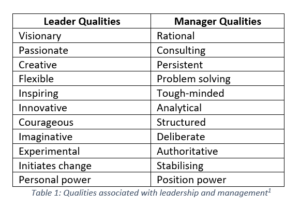10 Soft Skills You’ll Need To Be A Successful Business Analyst
You might already know the technical skills you’ll need to be a great Business Analyst (BA) but do you know the essential soft skills? The role of a BA is deeply rooted in working with people. You’ll often be coordinating with stakeholders, running workshops, or presenting documentation to teams. To be a successful BA you’ll need the following soft skills to compliment the technical ones.
Rapport Building
You’ll need to build rapport with your stakeholders early in a project which you can do in many ways. While you’re waiting for a meeting to start ask your stakeholders questions like, “how is your day going?”, “what are you doing in the weekend?”. I’ve been in meetings where everyone is silent until the workshop begins. Take advantage of this time to build rapport by finding common interests, showing empathy or complimenting them on something such as a tie, a picture in the background of the Zoom or their promptness. This may seem trivial, but it will set you up to succeed as the project rolls out. Your stakeholders will be more likely to attend meetings/workshops, feel more comfortable contributing and start to champion the project and the changes you’re making within the organization.
Empathy
The Oxford Dictionary defines Empathy as ‘The ability to understand and share the feelings of another’. This is an important soft skill for a BA because we need to put ourselves in our stakeholders’ shoes to understand the problems we are trying to solve. To have empathy means to understand the pain points within the organizations Current State which is essential when we’re trying to fix them. Try to imagine how frustrating it must feel to have outdated, manual process at work when the technology we use at home is so advanced these days. Use empathy to speak to these pain points and get stakeholder buy in and drive user adoption.
Enthusiasm
Depending on the scope of your project Stakeholders may be attending a lot of workshops and meetings so it’s important to be enthusiastic and positive about what you’re doing. Let’s be honest there’s nothing worse than a dull or dry workshop consisting of people talking at you with slides of written content. To get people to come along for the journey we need to engage them and be enthusiastic about what we’re doing. Speak positively about the benefits and outcomes of your project, show visual diagrams and ask questions to get people involved. Having a positive and bright disposition will pick people up when they engage with you, help them focus on the content and be more likely to contribute.

Active listening
When we’re working on current state or establishing things like user journeys, user personas, use cases or processes a key soft skill you’ll need is Active Listening. Active listening is a pattern of listening that means listening to verbal and non-verbal cues without judging or jumping to conclusions. When you’re active listening you’re not thinking about what to say next you are completely focused on the person communicating. Don’t interrupt them or propose solutions at this stage, instead paraphrase and reflect what you’ve heard back to the person. This will ensure you don’t miss anything, don’t misinterpret anything and help you understand the paint points your users are experiencing in more depth.
Creativity
When making changes to the organization such as processes, we need to find solutions that work for everyone. For this we will need to think outside the box because realistically we may not be able to meet everyone’s needs, or some people may just be averse to the changes. To facilitate the transition, we can use creative visualizations to get everyone on board the journey; Miro, Figma and Visio are great tools for creating visual diagrams. You can do role plays during workshops, online or in person to outline the steps of a new process. Be creative and use your imagination to make it fun and engaging for your stakeholders.
Advertisement
Adaptability
As a BA you may find yourself on new projects for new businesses often and every situation will be unique. You will need to assess each business’s unique culture, ways of working and environment. Some businesses may be very formal and highly governed while others may be casual and more agile in their approach. To be successful in all these environments you need to be able to adapt, this means finding the right language, terminology, pace, document structure and hierarchy. Recently I worked on a project for a very successful company that still had a startup mentality. They embraced agile ways of working and feared having their autonomy taken away, because of this the word ‘Governance’ was a trigger for many of the staff. We had to adapt our language to suit the client and instead of ‘Governance’ we used ‘Guidelines’. Be adaptable and understand the culture you are working in, don’t work against it, work with it.
Communication
Clear and concise communication is important to be successful as a BA. When working with people things can get lost in translation, its our jobs as BAs to ensure they don’t get lost! Be willing to speak up and ask for more detail if you don’t understand something or when you notice others aren’t understanding it either. At times you may need to control the pace of a discussion, to speed it up to keep people engaged or to slow it down if it is moving too fast. There are times when you will need to paraphrase what someone has said to communicate it more effectively to the broader audience. You can use terms like “what I’m hearing is…” or “To put that another way might be…”. Utilizing your communication skills will ensure workshops and meetings stay on topic and you get what you need out of them.
Patience
You may find yourself in a situation where you already know the journey ahead for your stakeholders for example a company is implementing an out-of-the-box solution. You’ll need patience to assess their current state to find gaps and bring the stakeholders along for the journey so they can get excited about their new technology and processes, even though you already know the outcome. Another example of using patience is in workshops where different participants repeat information to you, you need to actively listen so they feel heard, but it could get a little boring for you. Lastly, not everyone you encounter is going to be a great communicator, some people talk for too long, some people get off topic, some people are hard to understand, and you need to listen to these stakeholders trying to communicate ineffectively and decipher what they’re saying, this takes patience.

Improvisation
You will find yourself in meetings with technical people, non-technical people and people from all different units of the business. Analogies are a great way to explain complex strategies or technology to people that don’t understand what you’re talking about. If someone doesn’t understand something a great way to describe it to them in terms they can understand may be using analogies. You can improvise and tell them about “One time I went to the supermarket and at the checkout this happened…. Which is like this technology system that does this…”. You will get better at this over time and come to understand what works for stakeholders from different Business Units.
Conflict Resolution
Often our stakeholders may disagree on things like current state or how future state should be. We need to manage both points of view and bring the team to a consensus where possible. Consensus may not be possible in all situations, but we still need to handle the conversations constructively so that everyone agrees upon the next steps. Some pointers for conflict resolutions are
- Defuse Anger and facilitate communication
- Separate people from problems
- Listen first, talk second
- Set out the facts
- Explore options together
Using these tips, we can find a way to move forward together and keep the project on track.
People Process and Tooling (The PPT framework) is a great way to approach IT changes within an organization. I believe the most important aspect in this framework is people because the technology and processes are no good if the people within the organization don’t use them. You can use these soft skills as a BA’s when engaging people to ensure organizational changes are adopted and in turn, you will be successful too.






